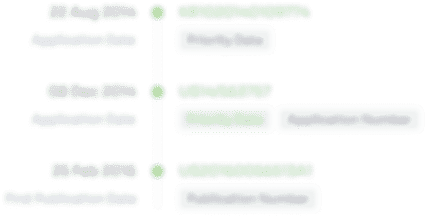Patch antenna with wire radiation elements for high-precision GNSS applications
a technology of radiation elements and antennas, applied in the field of antennas, can solve the problems of overall design complexity, inability to meet the standard operation of high-precision gnss receivers, and inability to meet the standard operation of forward hemispheres, and achieve the effect of reducing directional patterns
- Summary
- Abstract
- Description
- Claims
- Application Information
AI Technical Summary
Benefits of technology
Problems solved by technology
Method used
Examples
Embodiment Construction
[0009]In accordance with an embodiment, a single-band right-hand circularly-polarized patch antenna comprises a ground plane and a patch connected to each other with at least four (4) wires for which the wire shape and location of the end points are selected such that they do not cause an antenna mismatch, and the electrical current carried in the wires produces an extra electromagnetic field subtracted from the patch electromagnetic field in the nadir direction. In accordance with the embodiment, this facilitates an antenna with low DP level (i.e., Down / Up level) in the nadir direction and with a smaller (and shorter) ground plane such that the size of the ground plane becomes practically as long as the patch, and there is no additional power supply necessary to power the wires. In accordance with an embodiment the patch antenna is a single-band right-hand circularly-polarized patch antenna providing a reduced directional pattern in the backward hemisphere.
[0010]In accordance with ...
PUM
 Login to View More
Login to View More Abstract
Description
Claims
Application Information
 Login to View More
Login to View More - R&D
- Intellectual Property
- Life Sciences
- Materials
- Tech Scout
- Unparalleled Data Quality
- Higher Quality Content
- 60% Fewer Hallucinations
Browse by: Latest US Patents, China's latest patents, Technical Efficacy Thesaurus, Application Domain, Technology Topic, Popular Technical Reports.
© 2025 PatSnap. All rights reserved.Legal|Privacy policy|Modern Slavery Act Transparency Statement|Sitemap|About US| Contact US: help@patsnap.com